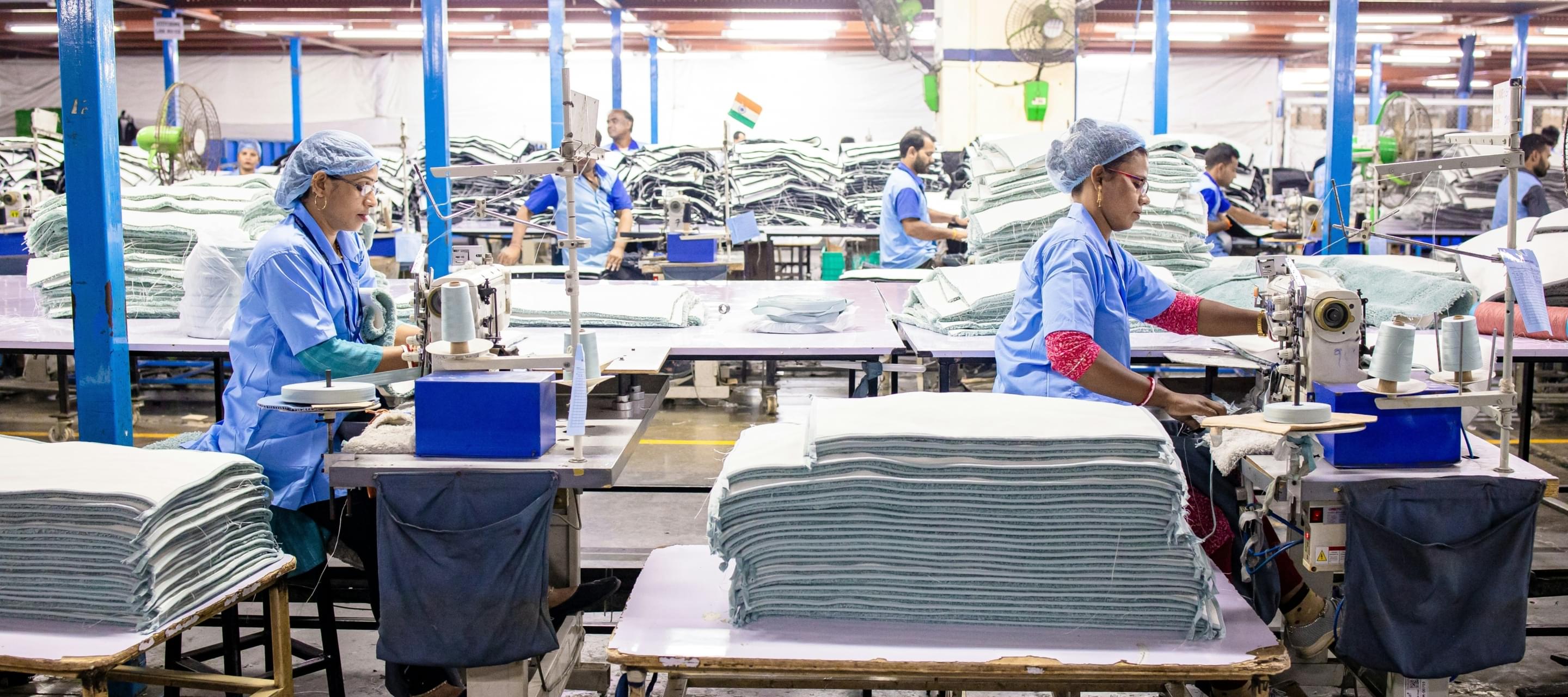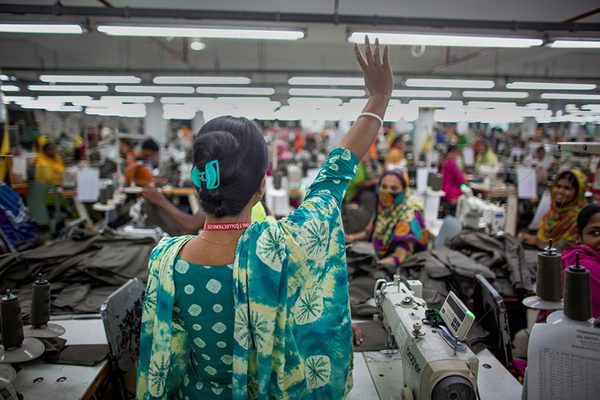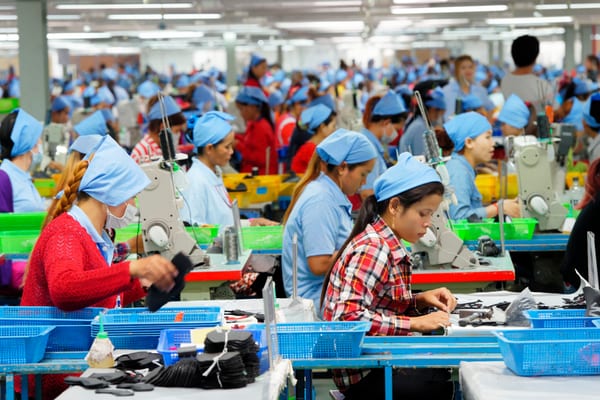Unprecedented tariffs call on us to reimagine more equitable supply chains
2 May 2025

In early April the Trump administration issued the most sweeping global tariff hike since the 1930s. All imported goods were to be subject to 10% tariffs and specific countries, like key garment exporters to the US--Bangladesh, Cambodia, Vietnam, and China--were all hit with high tariffs ranging between 37 to 84 percent. A week later, Trump gave countries a temporary reprieve by imposing 10% tariffs across the board, with the exception of China, which was hit with a 125% hike effective immediately.
In addition to causing global economic uncertainty and fears of a recession, experts predict that US based apparel brands will reduce orders they source from the Global South, if not cancel their orders outright, and/or ask for significant discounts from their suppliers, and continue to put intense pressure on their suppliers to bear the burden of tariff so that the importers’ costs are decreased.
For garment workers already on low wages in garment exporting countries, their wages are likely to be squeezed further and may even reduce in real terms. These workers will continue to face precarious livelihoods, poor working conditions, and increased human rights risks.
Wages in most garment exporting countries are already considerably below a living wage, it is impossible for workers to meet their basic needs. Suppliers continue to reduce costs to meet buyer demands, and clothing brands sell merchandise in a competitive environment, while ensuring their own profits. It means very little of the price you pay for a T-shirt or a pair of jeans actually ends up improving the lives of workers who made the item in a factory. Since the costs of material inputs and infrastructure are not typically negotiable, global uncertainty brought about in part by the new US-imposed tariffs will result in workers’ wages and benefits taking an even bigger hit. Decades of experience has shown us that even during more stable times, risk is always pushed down to suppliers who operate on razor thin margins. This is even further exacerbated during crises.
What, if anything, have we learned from past moments of uncertainty?
It seems like déjà vu because just five years ago, during the global pandemic, we faced extreme uncertainty and volatility in the global supply chain. During this time, many brands cancelled orders that were already produced, or they asked their suppliers for significant discounts.
While doing research for a 2021 IHRB report, Salil Tripathi, Nancy Reyes Mullins, and I spoke with several brands, suppliers and civil society organisations to understand the actions many brands had taken during this crisis and documented the suffering workers faced as a result. I also spoke with a number of brands during that time, who thought the global uncertainty would be a good opportunity to focus on collaborative relationships with their suppliers. As one brand highlighted, “…if a supplier is struggling and they know we will try to help them out, then when we are being demanding, they are more likely to see what they can do to help us out as well. We need them as much as they need us. That is one of the things that COVID showed us very clearly…”
Unfortunately, research in 2021 by the NYU Center for Business and Human Rights found that many brands were continuing certain harmful practices they had followed during the pandemic. Three years after the pandemic first hit, I found that suppliers had not experienced partnerships in a productive or meaningful way.
Can we use this moment to rethink supply chain relationships?
Could this time of extreme uncertainty be an opportunity for businesses to rethink their purchasing practices and pursue more collaborative and cooperative relationships that may be better for businesses, their suppliers, and ultimately for workers, in the long run?
Regardless of the fluctuating tariffs, businesses must always be prepared for uncertainty, whether due to a pandemic, armed conflict, economic downturns, or climate change. A shared responsibility model, built on collaborative relationships, is the best way forward.
In such a model, global brands, would comply with human rights and environmental due diligence (HREDD) regulations and assess risks and impacts of their actions. This would require them not to push all the risks down the supply chain, affecting their suppliers adversely. It would mean addressing their role and assessing consequences of their actions, which may exacerbate human rights risks through certain harmful purchasing practices like unpredictable ordering patterns, sourcing beneath the cost of production, or late payments. And, in this instance, by pushing the burden of the tariff entirely on the supplier abroad, instead of the consumer at home. In exchange for collaboration on the due diligence process from their suppliers (and further down the supply chain), brands should commit to better practices and provide guarantees of business for a certain period of time, eliminating the need for fierce competition among suppliers that only leads to a race to the bottom.
During these times of economic disruptions and fluctuations in consumer demand, businesses can no longer afford to simply mass-produce items without thinking through the consequences of their actions because it will be far more costly for them to reset their business strategy. In the long run, it makes good business sense for companies to focus on fewer, longer-term relationships with reliable suppliers committed to respecting the rights of their employees. This is the time when frequent communication, long term forecasting, realistic pricing, and supplier capacity building are essential.
In 2023, I discussed three essential elements (which I describe as the “Three C’s”), which would be critical for the supply chain of the future; the time is now for companies to focus on these.
- Communication: Meaningful dialogue between businesses and their suppliers and most importantly with rightsholders is critical to not only meet regulatory requirements, but to engage thoughtfully and understand both the opportunities and challenges that each group faces.
- Collaboration: Working together with other companies and with those at the various tiers of the supply chain will be essential for companies to be able to deal with what may lie ahead.
- Commitment: Committing to a shared responsibility model requires a focus on eliminating harmful business practices and working with suppliers on a shared vision forward.
For decades, businesses outsourced production, often to countries with minimal enforcement of laws and restrictions on labor organising, to keep margins low and profits high, often at the expense of those at the bottom of these opaque supply chains. This model did produce cheap clothing, making it affordable for the poorer communities in importing countries, but recently imposed tariffs can disrupt the model. It can weaken suppliers further by imposing costs on them, which they would recover by paying some of the most vulnerable workers even less. Or, importers can increase prices at home, which would make consumers in importing countries aware of the consequences of tariff changes. Or, buyers can take a longer-term view and absorb some of the initial losses, given their high profit margin, so that neither poor consumers in their markets, nor poor workers in exporting countries, bear the entire burden. It may reduce profit in the short run, but in an acutely price-conscious business, it can enhance a company’s reputation among discerning and socially-conscious consumers. During this time of great uncertainty, there is a real opportunity to reimagine a more equitable supply chain. It might also make the best business sense to do so.




